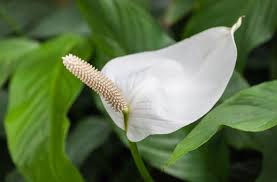If you’ve got a golden pothos (Devil’s Ivy) plant, you’re probably wondering how to make more of them. And if you don’t have a golden pothos, then you probably have no idea what I’m talking about—but that’s OK! The golden pothos is an easy-to-grow plant that’s great for beginners as well as experienced gardeners. In this article we’ll tell you everything you need to know about propagating your existing golden pothos plants so they can grow new ones in no time at all. So let’s get started!
Cuttings (aka propagate) from your existing pothos plant to make more plants.
Cuttings are the best way to grow more plants.
You can take cuttings from any part of a healthy plant, including stems, leaves and roots. Cuttings should be about 3 inches long and have several sets of leaves on them for maximum rooting ability (you’ll need at least three or four sets). After taking the cutting(s), dip them into rooting hormone before putting them in water until they develop roots.
Cut your plant in the right place
Now that you have a pothos plant and are ready to take cuttings, it is important to know where on the stem you should cut. You want to make sure that you’re cutting at a node, or point where leaves grow from branches.
The best time to take a cutting from your golden pothos is when it’s still green (not brown). If possible, wait until after watering but before nighttime temperatures drop below 60 degrees Fahrenheit (16 Celsius).
Place your Golden Pothos cuttings in water
Now that you’ve taken your cutting, it’s time to put it in water. This will keep the plant alive and healthy as it roots itself.
- Place your cutting in a glass of water (or any other container) so that the leaves are submerged. The water level should not drop below where the leaves meet the stem of your pothos; otherwise, they may rot or die from lack of nutrients from being too dry.
- Don’t let this happen! Change out your plants’ water every few days so that things stay fresh and clean for them!
- Never let them dry out completely!
Find a place that gets indirect sunlight, but not direct sunlight. Direct sunlight can burn your cuttings.
You can find a place that gets indirect sunlight, but not direct sunlight. Direct sunlight can burn your cuttings. Indirect light is found in north-facing windows and reflected from south-facing windows.
Light intensity can be measured with a light meter or by using the “hand test.” The hand test involves putting your hand about six inches above the plant and seeing if it feels warm (like summertime) or cool (like springtime). If you have an accurate thermometer, you can use that to measure temperature as well: 21 C (70 degrees F) is ideal for most houseplants.
Pot your golden pothos on
To pot it on, you’ll need:
- Potting mix (or soil)
- Container with drainage holes and a lid, if desired. If you don’t have one that’s wide enough for your cutting to sit in comfortably, you can use a piece of plastic wrap or wax paper to cover the top before putting on the lid. This will help keep moisture from evaporating too quickly from around your cutting so that it doesn’t dry out and die before it has time to establish itself as an independent plant. It also makes transporting cuttings easier because there’s no risk that dirt will spill out during transit!
- Water (and fertiliser if desired)
Conclusion
If you have a pothos plant, this is a great way to make more plants. The cutting method is very easy and won’t take up too much time in your day. All it takes is some patience and care for the new plant until it starts growing on its own!
Keep on top of your gardening with our free online journal
Our free online tool allows you to organise your ideas and garden plans and help you be as efficient as possible in the garden.
Sign up now

